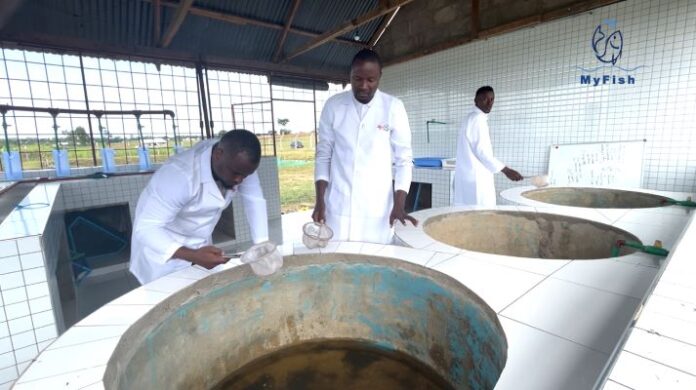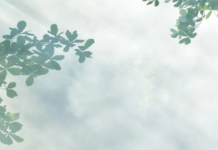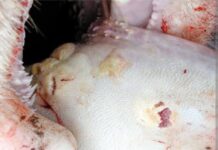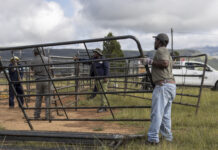
The increasing demand for fish, especially the freshwater fish in Tanzania is pushing farmers to explore modern means of improving production and harvest to cope up with the needs of the ever growing number of consumers.
According to the United Nation’s Food and Agriculture Organisation (FAO), the total fish consumption in Sub-Saharan Africa region will grow by 30 per cent overall due to rapid population growth of 2.3 per cent from 2010 to 2030.
In Tanzania, the current fish demand is between 700,000 and 800,000 metric tons annually but supply stands at about 400, 000 to 450,000 metric tons.
As a result, cage fish farming has turned into a thriving business which meets the demand for fresh fish in the local markets in the wake of dwindling stocks in the natural waters.
Elpidius Mpanju, 34, is a proud cage fish farmer in Tanzania. With little savings while a student at St. Augustine University of Tanzania in 2022, the young farmer is now setting the pace in cage fish farming in the country currently owning over 60 cages in Lake Victoria.
“I have come to realise that our country is endowed with enough natural resources that if utilized well, we won’t have to import food, especially fish from other countries,” said Mpanju adding that with modern technologies Tanzania can surpass its fish production and consumption needs.
Training farmers
The young agripreneuer who is also the founder and CEO of MyFish Tanzania located in the Mwanza region of Lake Victoria says that though education on fisheries is provided in some colleges, over 80 per cent of people currently owning cages along Lake Victoria have been trained at his farm.
“Up to 2022 over 460 fish cages were introduced in Lake Victoria and I am proud that most of the owners were trained here,” he said, adding that the cages have had a significant role in raising the fish supply.
Other than creating employment opportunities for graduates, Mpanju’s farm is also used by government to train students studying at fisheries colleges across the country. In this year’s intake alone, 15 students were doing their field studies at the farm.
“I’m convinced that cage fish farming is the way to go in the consulted effort to meet fish production in Tanzania,” said Ms. Judith Mzurikwao, the Head of Digital and Finance Manager at MyFish Tanzania.
According to Magina Mashauri, the farm’s manager, over 30 youths have secured permanent jobs at their sites.
Untapped potential
Abdallah Ulega, Tanzania’s Livestock and Fisheries minister admitted that Lake Victoria has untapped potential on cage fish farming, saying it is the right time to change the trend.
“It’s true that, despite its huge potential, Lake Victoria is largely untapped and we are working on this to realise at least 600,000 metric tonnes per annum by 2025,” said Ulega.
He said the current national per capital fish consumption is far below the internationally recommended standard.
“Yields derived from traditional fishing have been declining, yet the demand is increasing, so the government is now encouraging commercial fish cage farming by identifying at least 30 potential areas for Lake Victoria in Mwanza and Bukoba.”
Mpanju’s key milestones
Some of the key milestones for Mpanju include being the first person in the country to be granted a permit to farm in cages.
Starting with 12, he has managed to expand to over 60 cages with 80 per cent of which are currently stocked.
Meanwhile his five-pond hatchery is 10 km from the grow-out farm and supplies local farmers, as well as his own operations with 2 g fingerlings.
“My first ponds were on rented land, but I have since bought a plot where I have built two 20 x 30 m ponds,” said Mpanju.
From here, he has been able to self-finance and grow the business to being one of the leading young farmers in the whole of East Africa.
His cages are around 500 m from the shore and include 5 x 5 x 5 m square cages, and three sizes of circular cages measuring 13 m x 7 m, 10 m x 7 m and 7 x 10 m. The lake is 12 m deep where he farms.
His main challenges include, among others, lack of financial support by institutions such as banks, poachers and poor quality of feeds that forces the company to import at high costs from Egypt and the Netherlands.








[…] Credit: Source link […]
A Very good job done keep motivating us
Sure
Comments are closed.